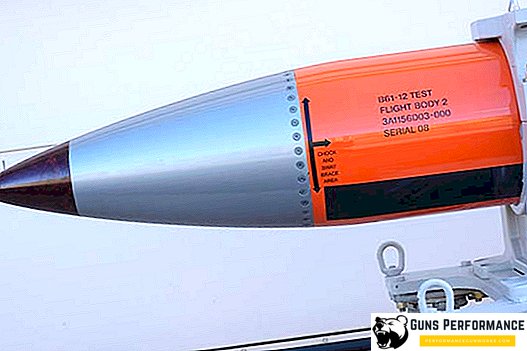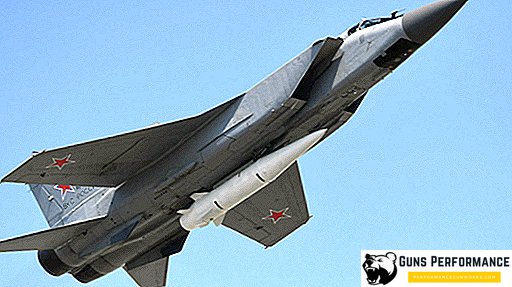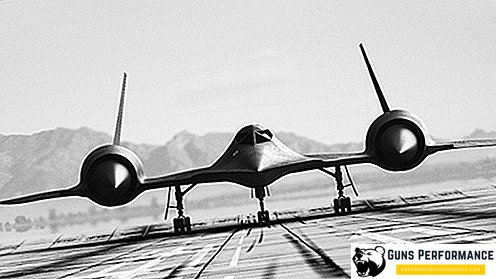The space around us is constantly in motion. Following the motion of galactic objects, such as galaxies and star clusters, other space objects, including astroids and comets, move along a well-defined trajectory. Some of them have been watched by a person for more than one thousand years. Together with permanent objects on our sky, the Moon and the planets, our sky is often visited by comets. Since its inception, mankind has repeatedly been able to observe comets, attributing to these celestial bodies a wide variety of interpretations and explanations. Scientists for a long time could not give a clear explanation, observing astrophysical phenomena that accompany the flight of such a rapid and bright celestial body.

Characteristics of comets and their difference from each other
Despite the fact that comets are a fairly common phenomenon for space, not everyone was lucky to see a flying comet. The fact is that, by cosmic standards, the flight of this cosmic body is often a phenomenon. If you compare the period of circulation of a similar body, focusing on the Earth time - this is a rather large period of time.
Comets are small-sized celestial bodies moving in outer space towards the main star of the solar system, our Sun. Descriptions of observations of such objects from the Earth suggest that they are all part of the solar system that once participated in its formation. In other words, each comet is the remnants of the cosmic material used in the formation of planets. Almost all known comets today are part of our star system. Like planets, these objects obey the same laws of physics. However, their movement in space has its differences and features.

The main difference between comets from other space objects is in the form of their orbits. If the planets move in the right direction, in circular orbits and lie in the same plane, then the comet rushes in space completely differently. This bright star, suddenly appearing in the sky, can move in the right or in the opposite direction, along an eccentric (extended) orbit. This movement affects the speed of the comet, which is the highest among the indicators of all known planets and space objects of our solar system, second only to our main star.
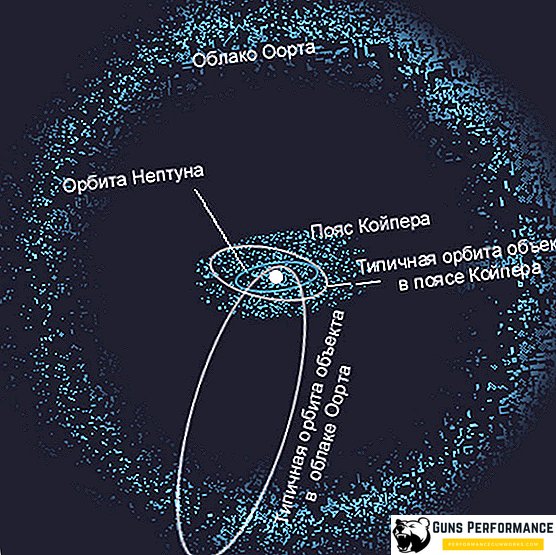
The speed of motion of Halley’s comet when passing close to the Earth is 70 km / s.
The plane of orbit of the comet does not coincide with the ecliptic plane of our system. Each heavenly guest has its own orbit and, accordingly, its own orbital period. It is this fact that underlies the classification of comets by period of circulation. There are two types of comets:
- short-period with a circulation period from two, five years to a couple of hundred years;
- long-period comets circling in orbit with a period from two, three hundred years to a million years.
The first are the celestial bodies, which quickly move in their orbit. Among astronomers, it is common to designate such comets with the prefixes P /. On average, the orbital period of short-period comets is less than 200 years. This is the most common type of comet, found in our near-Earth space and flying into the field of view of our telescopes. The most famous comet Halley makes its run around the Sun in 76 years. Other comets visit our solar system much less frequently, and we rarely witness their appearance. Their circulation period is hundreds, thousands and millions of years. Long-period comets are designated in astronomy by the prefix C /.
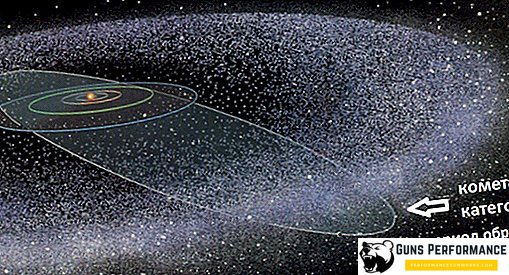
It is believed that short-period comets have become hostages of the gravitational force of the major planets of the solar system, who managed to wrest these celestial guests from the deep embrace of deep space in the Kuiper belt. Long-period comets are larger celestial bodies arriving to us from the far corners of the Oort cloud. It is this area of the cosmos that is the birthplace of all comets that regularly visit their star. After millions of years with each subsequent visit to the solar system, the dimensions of long-period comets decrease. As a result, such a comet can go into the category of short-period, reducing the duration of its cosmic life.
During observations of space, all comets known to date have been recorded. The trajectories of these celestial bodies are calculated, the time of their next appearance within the solar system and the approximate dimensions are established. One of them even showed us its death.
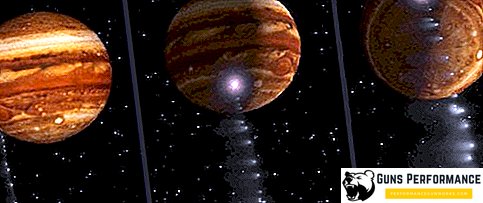
The fall in July 1994 of the short-period comet Shoemaker-Levy 9 on Jupiter was the brightest event in the history of astronomical observations of near-earth space. The comet near Jupiter has split into fragments. The largest of them measured over two kilometers. The fall of the celestial guest on Jupiter lasted for a week, from July 17 to July 22, 1994.
It is theoretically possible for the Earth to collide with a comet, but from the number of celestial bodies that we know today, none of them intersect with the trajectory of flight of our planet during its journey. There remains the threat of a long-period comet on our Earth’s path, which is still beyond the reach of detection devices. In such a situation, the collision of the Earth with a comet can turn into a global scale catastrophe.
In total, more than 400 short-period comets are known that regularly visit us. A large number of long-period comets come to us from deep, outer space, being born in 20-100 thousand AU. from our star. Only in the 20th century more than 200 such celestial bodies were recorded. It was practically impossible to observe such remote space objects with a telescope. Thanks to the Hubble telescope, photographs of the corners of space appeared on which a flight of a long-period comet was detected. This distant object looks like a nebula adorned with a tail millions of kilometers long.
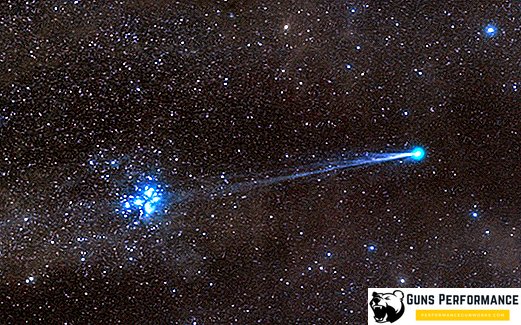
The composition of the comet, its structure and main features
The main part of this celestial body is the nucleus of the comet. It is in the core that the main mass of the comet is concentrated, which varies from several hundred thousand tons to a million. According to its composition, the celestial beauties are ice comets, therefore, on closer examination, they are dirty ice lumps of large sizes. By its composition, an ice comet is a conglomerate of solid fragments of various sizes, held together by cosmic ice. As a rule, the ice of the cometary core is water ice mixed with ammonia and carbon dioxide. Solid fragments consist of meteoric matter and may have dimensions comparable to dust particles or, conversely, have dimensions of several kilometers.
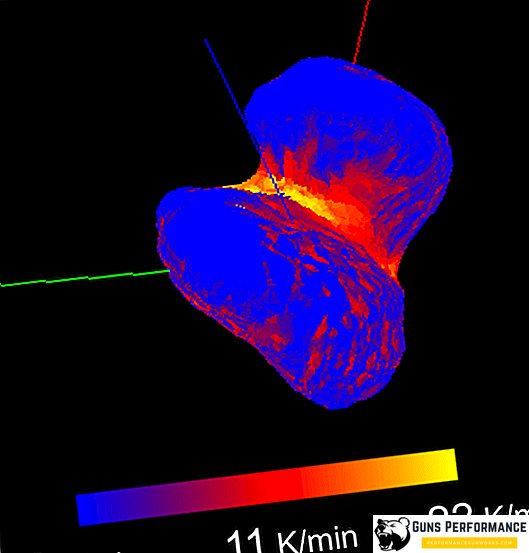
In the scientific world, it is considered that comets are space suppliers of water and organic compounds in open space. Studying the spectrum of the core of the heavenly traveler and the gas composition of its tail, the icy nature of these comic objects became clear.
The processes that accompany the flight of a comet in outer space are interesting. Most of their way, being at a great distance from the star of our solar system, these celestial pilgrims are not visible. Highly elongated elliptical orbits contribute to this. As the comet approaches the Sun, it heats up, as a result of which the sublimation of cosmic ice, which forms the basis of the comet's nucleus, is launched. In clear terms, the ice base of the cometary nucleus, bypassing the melting stage, begins to actively evaporate. Instead of dust and ice, under the influence of the solar wind, water molecules are destroyed and form a comet coma around the nucleus. This is a kind of crown of the heavenly traveler, a zone consisting of hydrogen molecules. Coma can be huge, stretching hundreds of thousands, millions of kilometers.
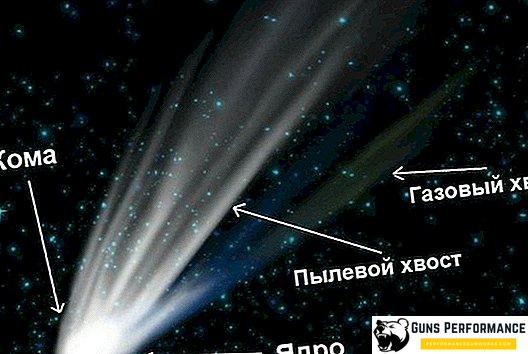
As the space object approaches the Sun, the speed of the comet is growing rapidly, not only centrifugal forces and gravity begin to act. Under the influence of solar attraction and non-gravitational processes, evaporating particles of cometary matter form the comet's tail. The closer the object is to the Sun, the more intense, larger and brighter the tail of the comet, consisting of rarefied plasma. This part of the comet is the most visible and visible from Earth is considered by astronomers to be one of the brightest astrophysical phenomena.
Flying close enough to the Earth, the comet allows you to examine in detail the entire structure. Behind the head of a celestial body, a train consists of dust, gas, and meteoric matter, which most often ends up on our planet as meteors.
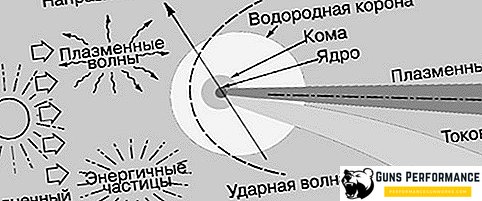
The history of comets, the flight of which was observed from the Earth
Near the planet, various space objects are constantly flying through, illuminating the sky with their presence. By their appearance, comets often caused unreasonable fear and horror in people. The ancient oracles and astrologers associated the emergence of a comet with the onset of dangerous life periods, with the onset of global scale cataclysms. Despite the fact that the comet's tail is only one millionth of the mass of a celestial body, this is the brightest part of a space object, giving 0.99% of light in the visible spectrum.
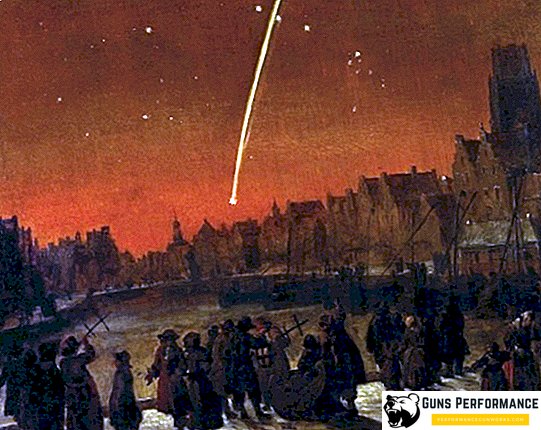
The first comet that could be detected through a telescope was the Great Comet of 1680, better known as Newton's Comet. Due to the appearance of this object, the scientist managed to get confirmation of his theories regarding Kepler's laws.
During the observations of the celestial sphere, mankind managed to create a list of the most frequent space guests regularly visiting our solar system. In this list in the first place is definitely Comet Halley - a celebrity who lit up with her presence for the thirtieth time. This celestial body was still observed by Aristotle. The nearest comet got its name due to the efforts of astronomer Halley in 1682, who calculated its orbit and the next appearance in the sky. Our companion with a regularity of 75-76 years flies in our zone of visibility. A characteristic feature of our guest is that, despite the bright trail in the night sky, the comet core has a practically dark surface, resembling an ordinary piece of coal.
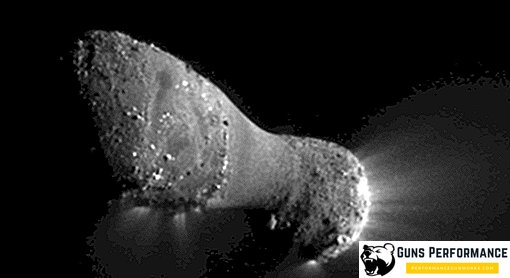
In second place in popularity and celebrity is Comet Encke. This celestial body has one of the shortest orbital periods, which is 3.29 Earth years. Thanks to this guest, we can regularly observe the Taurida meteor shower in the night sky.
Other most famous last comets, which made us happy by their appearance, also have enormous periods of circulation. In 2011, the Comet Lovejoy was discovered, which managed to fly in close proximity to the Sun and at the same time remain safe and sound. This comet belongs to the long-period, with a circulation period of 13,500 years. From the moment of its discovery, this celestial guest will remain in the region of the solar system until 2050, after which it will leave the limits of near space for a long 9000 years.

The highlight of the beginning of the new millennium, literally and figuratively, was comet McNaught, discovered in 2006. This heavenly body could be observed even with the naked eye. The next visit to our solar system by this bright beauty is scheduled in 90 thousand years.
The next comet that may visit our sky in the near future is likely to be 185P / Petru. It will be noticeable from January 27, 2018. In the night sky, this luminary will correspond to the brightness of 11 magnitude.


